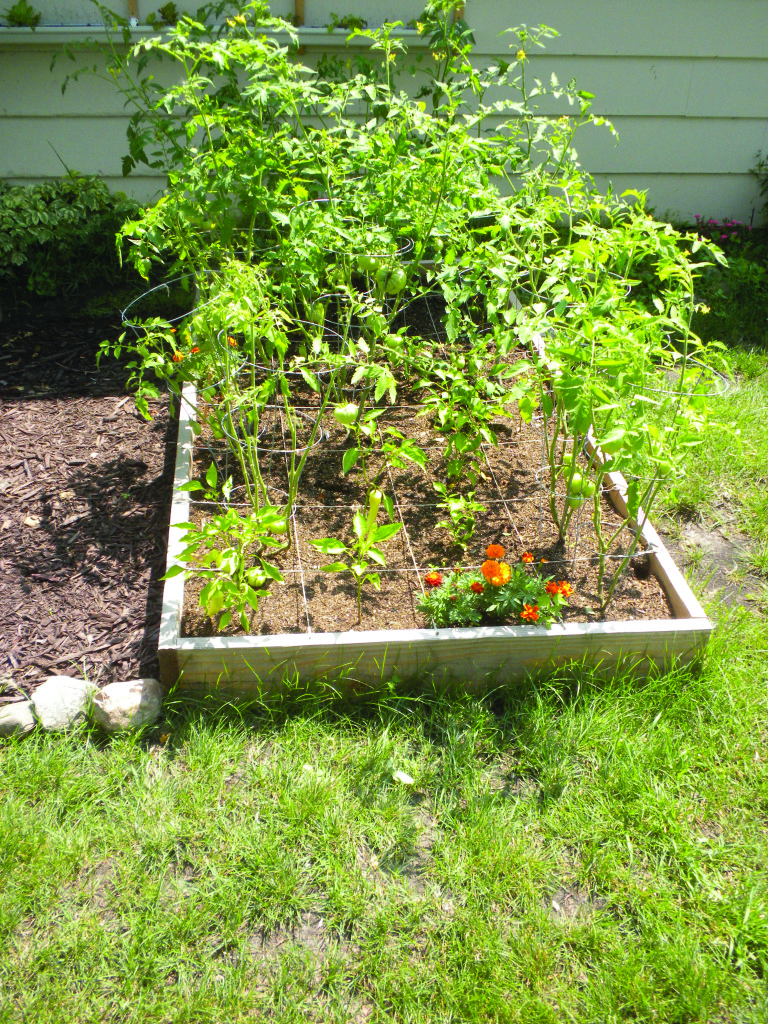 In areas of high-density housing, you may think it’s impossible to have your own garden. Just not enough space. And maybe you don’t have enough time, either. But thanks to the techniques used in square foot gardening, developed by Mel Bartholomew in the early 1980s, just a few feet of soil and a few minutes each day are all you need to grow your own fruit and veggies.
In areas of high-density housing, you may think it’s impossible to have your own garden. Just not enough space. And maybe you don’t have enough time, either. But thanks to the techniques used in square foot gardening, developed by Mel Bartholomew in the early 1980s, just a few feet of soil and a few minutes each day are all you need to grow your own fruit and veggies.
“Square foot gardening is a change of mindset from doing it out there in the wide rows,” says Connie Lahr, who, along with her husband Patrick, has been teaching square foot gardening classes to schools and communities around Minnesota for more than two decades. “If you’re gardening as a hobby, you’re more likely to tend to the garden every day. Square foot gardens are easier, more confined, but still productive.”
Larger gardens can get unwieldy and too time-intensive for those who want to garden as a hobby, Lahr says. The weeds will creep in and people often can’t keep up with day-to-day maintenance.
“But if a weed sprouts up in a smaller square foot garden, you’re more likely to see it and pull it out,” she says.
How To Make A Square-Foot Garden
The standard approach to square foot gardening can be experimented with depending on the gardener’s experience level, Lahr says. If smaller children are going to be helping, it’s best to keep it no more than three-feet wide, but you can play around with the design all you want.
There are a number of resources online to get step-by-step instructions for making your own square foot garden, including Lahr’s website at www.gardeningww. org, and the Square Foot Gardening Foundation’s website at www.squarefootgardening.org/.
Picking The Location
According to Gardening World Wide, pick a location that gets six-eight hours of sunshine daily and is close to the house for convenience. Avoid trees and shrubs due to roots and shade. Existing soil doesn’t really matter since you will be planting above it, but the area should not puddle after a heavy rain.
Lahr says she knows people who have square foot gardens on their decks or attached to the windowsill.
Building The Garden
The first step is to build a box. This requires four six-inch-wide, non-treated lumber boards. Wherever you place the box, remember to lay out weed mat to keep weeds out of the garden.
Next fill the box with soil that is equal parts peat moss, blended compost, and coarse grade vermiculite, or purchase pre-mixed soil from a local garden center or home improvement store. Lahr plays around with the mixes and tends to use 25 percent peat moss, 25 percent vermiculite, and 50 percent compost acquired from local farmers.
Finally, set up a grid system rather than rows. You can be creative with this, but the standard layout is four one-foot squares, each containing their own vegetation.
For planting, follow the instructions on the seed packets for proper spacing. Some veggies, such as broccoli, will need one whole square per plant. Others, like carrots, can be planted 16 times per square.
Moisten the soil completely before planting. To prevent chlorine from getting into the soil, Lahr recommends buying a rain barrel and using rain water.
The Hopkins, Minnetonka, and St. Louis Park community education programs offer square foot gardening classes.
